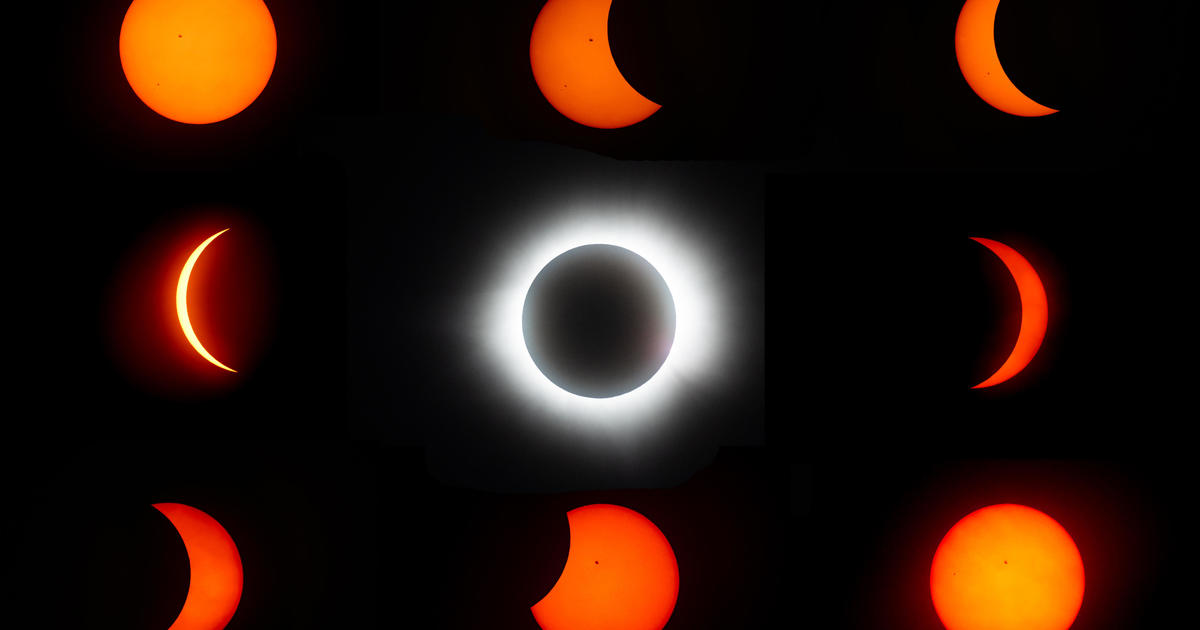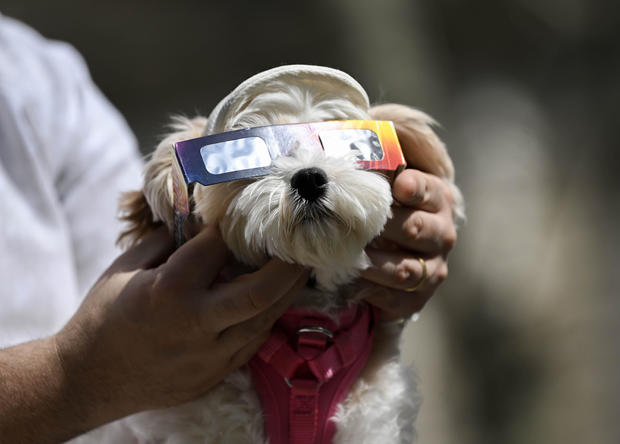Millions across America gathered on Monday and watched in awe as the moon covered the sun during a total solar eclipse.
More than 31 million people live along the path of totality, and many more flew or drove to witness the spectacle in person. The path of totality started over the Pacific Ocean before crossing parts of Mexico. It crossed into the U.S. in Texas and continued northeast across more than a dozen states before it passed into Canada.
The next total solar eclipse that will be visible from the contiguous United States won’t be until Aug. 23, 2044.
The longest duration of totality during Monday’s eclipse was 4 minutes, 28 seconds, near Torreón, Mexico, according to NASA.
Getty Images / Getty Images
One of the first stops in the U.S. was Eagle Pass, Texas. The state was a major hot spot for eclipse viewers. Before the event, the Electric Reliability Council of Texas, known as ERCOT, which provides solar service to 90% of the state, warned the eclipse would affect solar production in Texas between 12:10 p.m. and 3:10 p.m. CDT.
SUZANNE CORDEIRO/AFP via Getty Images
As the eclipse began, and the moon began to cover the sun, the sun had a crescent shape. Gradually, more and more of the sun is covered until the eclipse reaches totality. During totality, viewers in many places were able to see a corona, the outermost part of the sun’s atmosphere.
HECTOR VIVAS / Getty Images
Couples also exchanged vows during a mass eclipse wedding in Russellville, Arkansas. The event was called the Total Eclipse of the Heart festival. Hundreds of couples gathered for the special event.
Mario Tama/Getty Images
People also took to the skies during the eclipse, boarding special flights along the path of totality. Delta offered flights from Austin to Detroit and a second route from Dallas to Detroit. Passengers were given specialized glasses so they could safely view the eclipse.
Southwest Airlines also offered eclipse flights, with glasses provided to passengers.
Justin Sullivan/Getty Images
Some viewers donned red, green and blue to see the eclipse. As the moon blocked out the light of the sun, it changed how people saw the colors, NPR reported. Colors with longer wavelengths looked darker while colors with shorter wavelengths had “a chance to shine.”
Joe Raedle/Getty Images
Viewers also headed outside in big crowds to catch the eclipse outside the path of totality. Many watched in New York City, where there was a partial eclipse covering nearly 90% of the sun.
Andrew Lichtenstein/Corbis via Getty Images
David Dee Delgado / REUTERS
Lawmakers also enjoyed the eclipse. U.S. Senate Majority Leader Chuck Schumer was spotted in eclipse glasses at the U.S. Capitol. Before the eclipse, the White House posted a short video of President Biden wearing his eclipse glasses and encouraging Americans to enjoy the view. “But don’t be silly, folks — play it safe and wear protective eyewear,” the message said.
Anna Moneymaker/ Getty Images
Viewers also enjoyed seeing the skies darken as the moon covered the sun in Canada. The eclipse passed through Canada before exiting continental North America off Newfoundland.
Mert Alper Dervis/Anadolu via Getty Images
An eerie glow appeared as the moon blocked out the sun during totality, briefly plunging daylight into darkness.
/ Getty Images
Some were able to take in the view from stadiums. Players looked up ahead of the game between the Chicago White Sox and the Cleveland Guardians at Progressive Field in Cleveland, Ohio. Fans also enjoyed the eclipse experience ahead of a game between the Miami Marlins and the New York Yankees at Yankee Stadium, which was pushed back until after the eclipse.
Lauren Leigh Bacho/MLB Photos via Getty Images
The eclipse also caused traffic jams in some areas.
Peter Zay/Anadolu via Getty Images
Some people made sure their pets got in on the fun. Here, a dog looks at the view through eclipse glasses in New York City’s Bryant Park.
Fatih Aktas/Anadolu via Getty Images
The eclipse’s path of totality stretched from Mexico, across 15 U.S. states and finally into Canada. The photo below shows the view from Magog, Quebec, Canada, as the 2024 eclipse neared its conclusion.
STAN HONDA/AFP via Getty Images
















